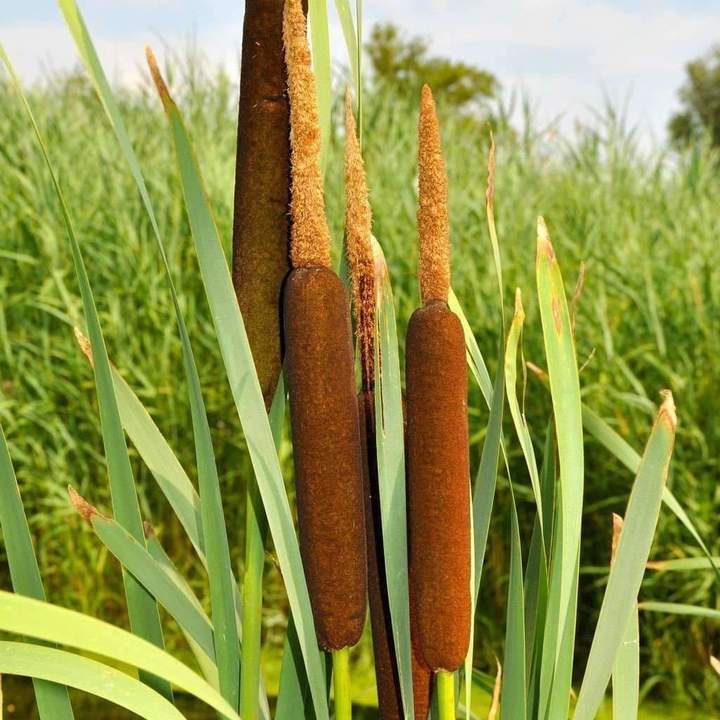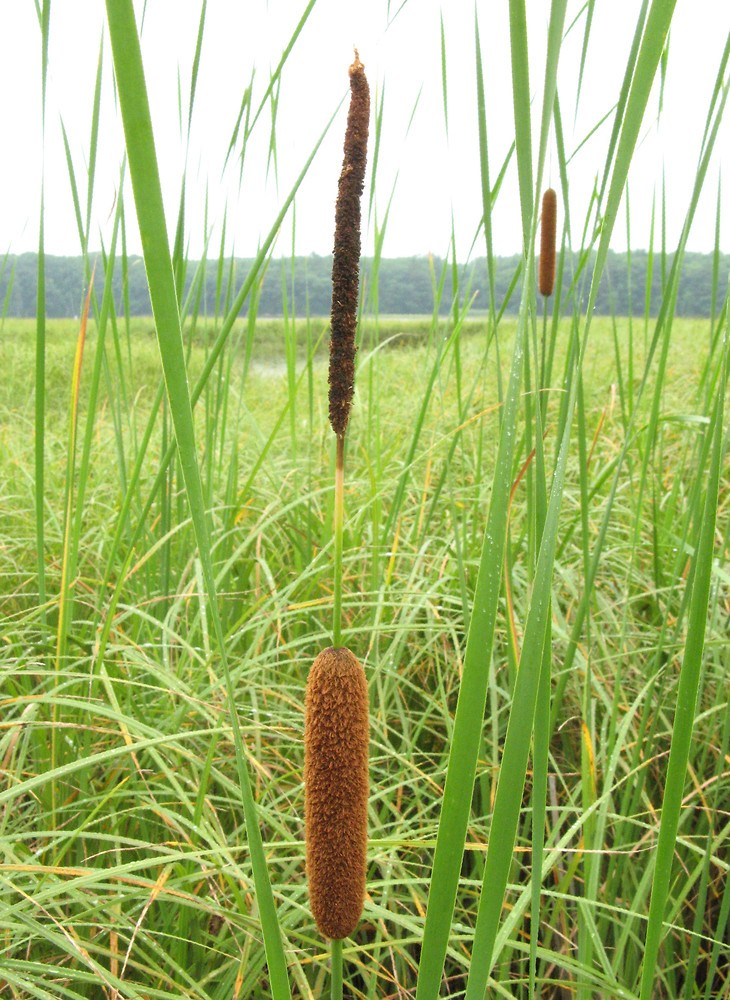By: Zach Haas
Senior Aquatic Biologist
If you have water, you most likely have cattails. If you have cattails, you should be ready to control them before they take over your pond.
Whether you own a pond or live on a lake you probably have encountered cattails a time or two. Though great for the ecosystem, cattails can take over your shoreline causing potential issues down the road for your ecosystem.
The state of Wisconsin is home to two (2) species of cattails which are both native species. These species are the narrow-leaved cattail (Typha angustifolia) and the broad-leaved cattail (Typha latifolia). Of the two species the narrow-leaved cattail tends to be much more aggressive in encroaching your pond’s shoreline. Their field identification can be quite easy to determine when you know where to look. The main two ways we use for field identification is by looking at their reproduction parts and also blade density. As you can see in the image below the best way to know what species you have is by their reproduction parts. The narrow-leaved cattail has a small separation of the two parts whereas the broad-leaved cattail parts sit right on top of one another. As for blade density, the narrow-leaved cattail is just as its name applies, very narrow. The broad-leaf cattail resembles more of an iris in its growth structure with a wider blade.

Broadleaf Cattail Reproduction Parts 
Narrow Leat Cattail Reproduction Parts
Now that you know a little bit about how to I.D. your cattails we are here to tell you that if you haven’t grown too comfortable with them that we have treatment options for you. These treatment protocols help reduce their regrowth for the season, and potentially into next year depending on the cattail stand densities. We are currently sending staff around the state to treat these cattails to gain control of them for you. If you are more of a DIY kind of person we also have options for you to utilize to gain control. If you are interested in learning more about the cattails growing around our state, and how to get rid of them at your location, please contact one of our on-staff biologists.